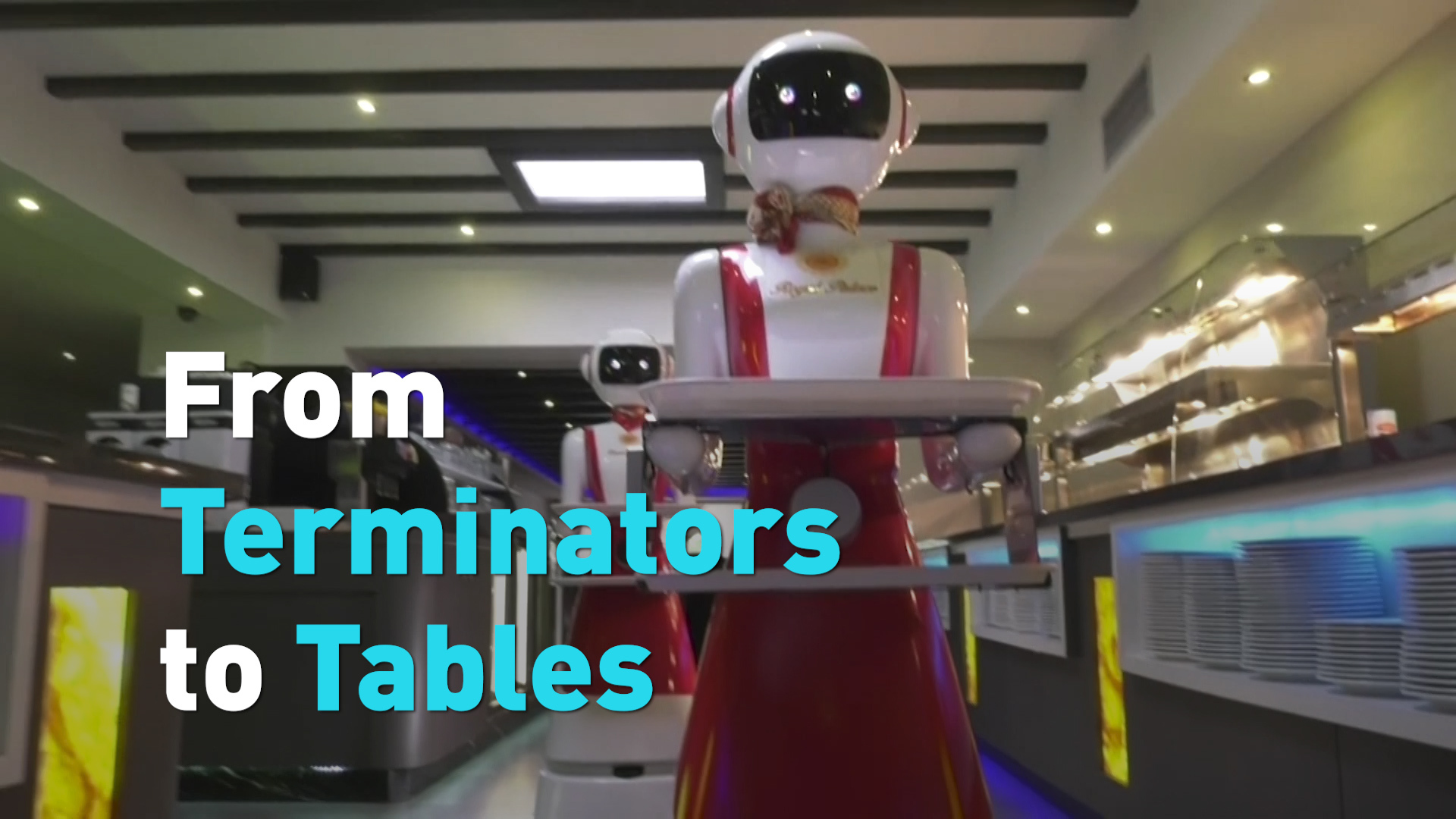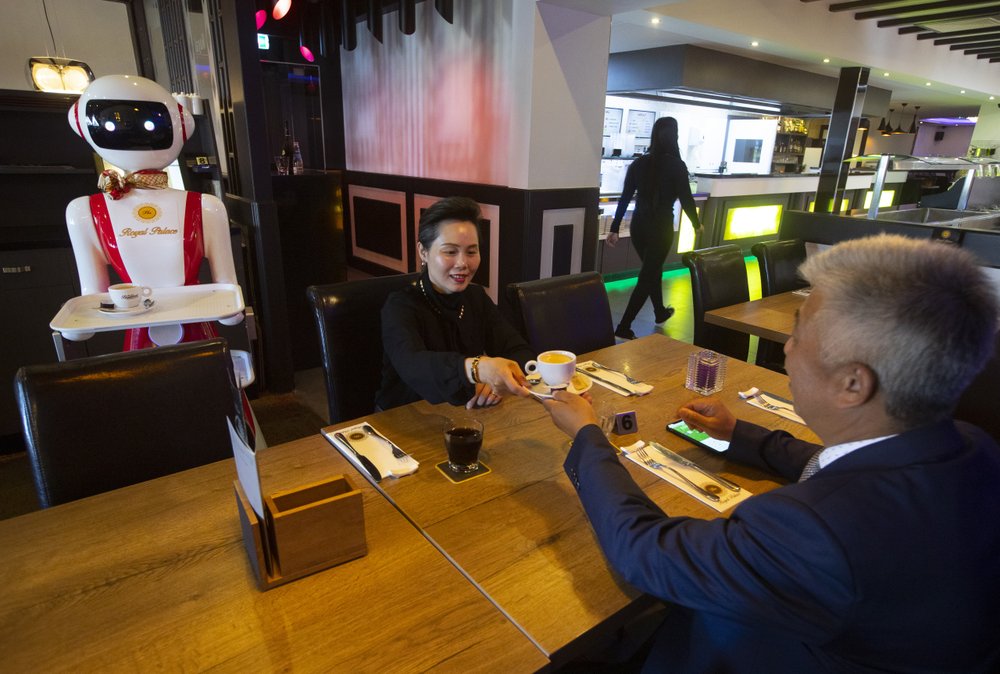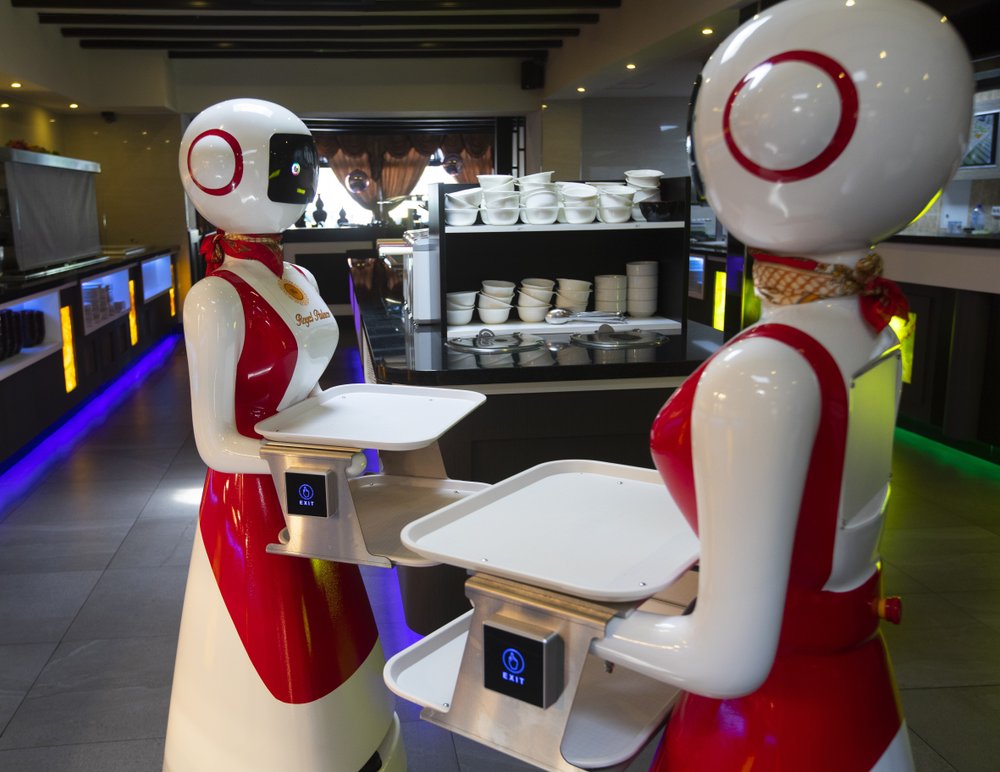01:24

They're the newest employees of the Royal Palace restaurant in the Netherlands.
When Hu Shaosong saw robotic waiters serving food in China last fall, he knew exactly what he wanted for his restaurant in the Dutch beachside town of Renesse. He just didn't have a clue how useful they would prove.
The coronavirus pandemic has turned a whimsical idea into perhaps a window into a dystopian future where a human touch may make people cringe with fear, and a waiter clearing the table sends a customer tense with stress — only to be relieved by a soothing brush with plastic.
Now, his two shiny white-and-red robots glide across the dining area's floor where, once the restaurant reopens, they will be serving Chinese and Indonesian specialties like Babi Pangang and Char Siu at 15.5 euros (17 U.S. dollars) each.
"Hello and welcome" the robots say — in a voice best described as pre-programmed.
They will greet customers, serve drinks and dishes and return used glasses and crockery. It's unclear whether diners will be expected to tip.
One thing the robots will certainly do is to see that social distancing rules are respected. "We will use them to make sure the 1.5 meters we need during the corona crisis sticks," Leah Hu said.

Robot serves food at the Hu's Royal Palace restaurant in Renesse, southwestern Netherlands, May 27, 2020. /AP
Robot serves food at the Hu's Royal Palace restaurant in Renesse, southwestern Netherlands, May 27, 2020. /AP
China's post-pandemic catering industry
For the post-pandemic catering industry, no-contact services tend to become normalcy.
These robot waiters are exactly one of the perfect inventions in the age of the crisis. They can't get sick nor get others sick. Also no need for masks or social distancing rules for these automatons.
According to the guidelines published by the China Hotel Association (CHA), restaurants, bars, night clubs, and catering companies are encouraged to offer no-contact options, like making orders via mobile apps or self-service kiosks, serving and delivering food by robots, to minimize the risk of cross-infection, as long as robots are disinfected and maintained regularly.

Robots at the Hu's Royal Palace restaurant in Renesse, May 27, 2020. /AP
Robots at the Hu's Royal Palace restaurant in Renesse, May 27, 2020. /AP
Why robotic servers can win the market?
A CHA report released in March shows that shrinking revenues and expensive human costs top the ranking of the pressure of business reopening listed by the catering industry.
Fear of contact transmission when in public areas is the major concern for customers to give up eating or ordering food from outside. Therefore, business owners, who have to self-rescue in the post-COVID-19 era, need to blaze a trial to fix this.
And that's how robots came in. On the one hand, robotic servers can reduce part of human costs and improve work efficiency. On the other sides, no direct human contact is a huge bonus for people who are afraid of getting infected.
Data shows the average monthly salary for each of waiters or waitresses in big cities ranges from 4,000 to 7,000 yuan (560-980 U.S. dollars). But for robot service, that can be a once-and-for-all deal with half of the human cost.
Additionally, the most attracting part for having robots in-house is they can offer a 24/7 working schedule, since machines never demand for rest.
(With input from AP)